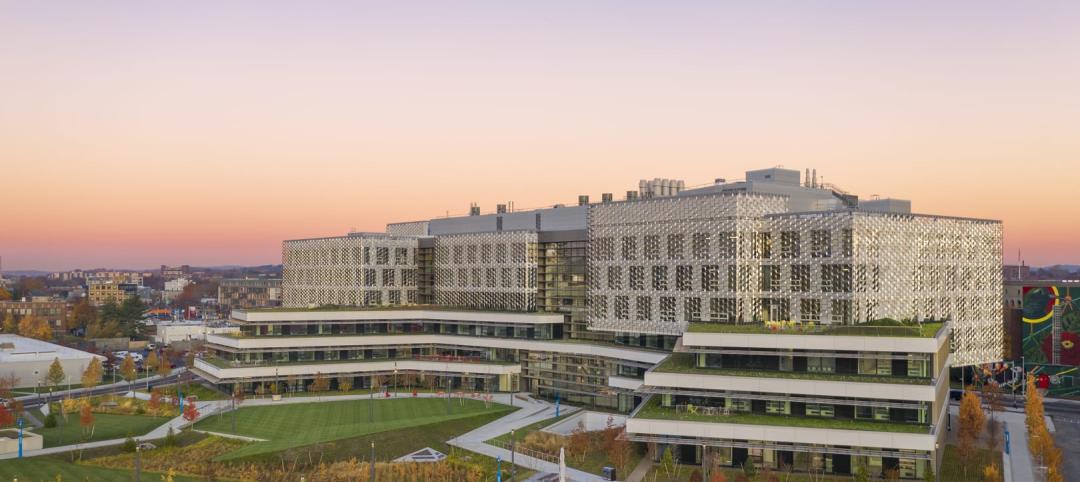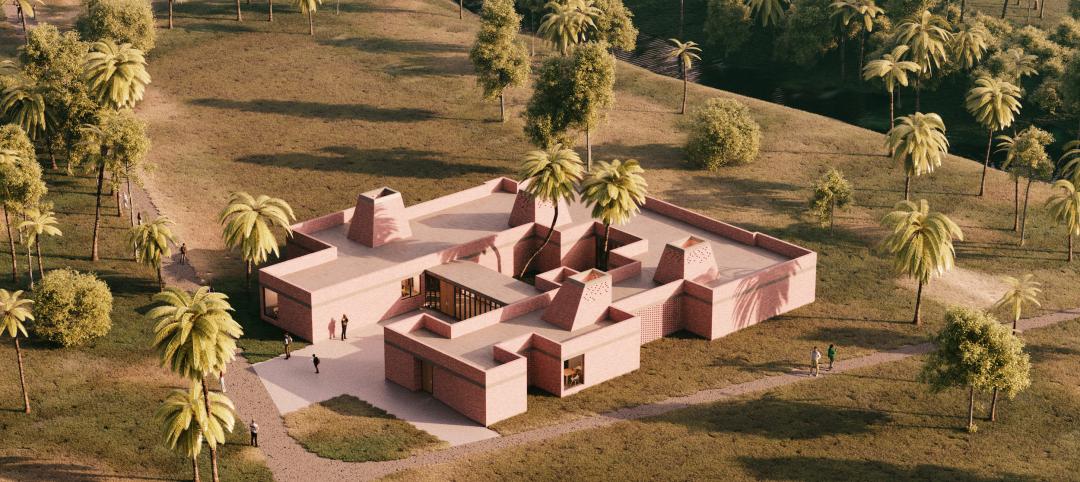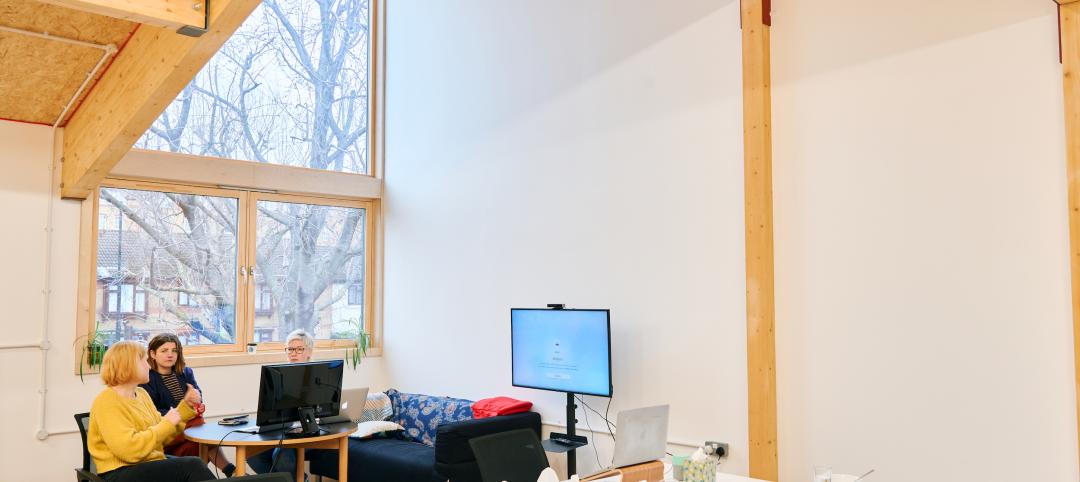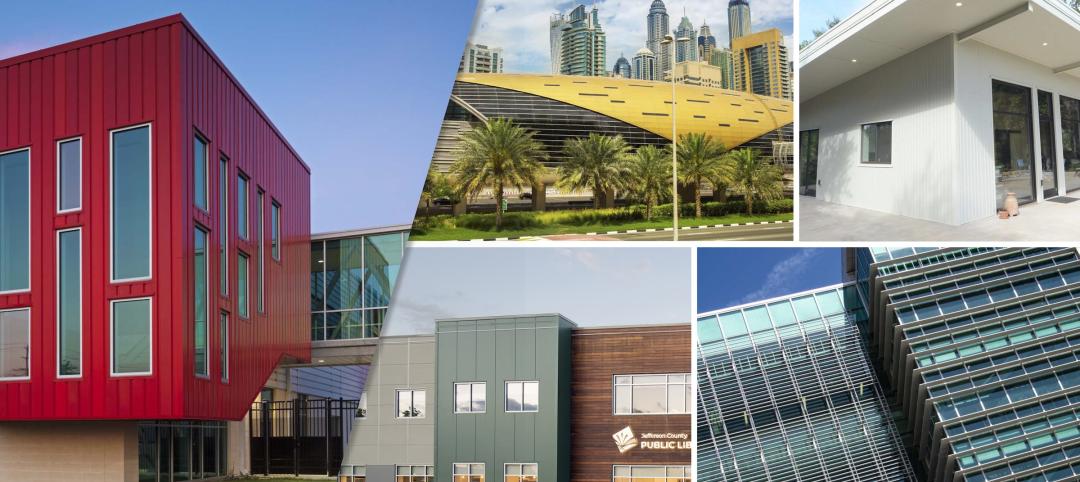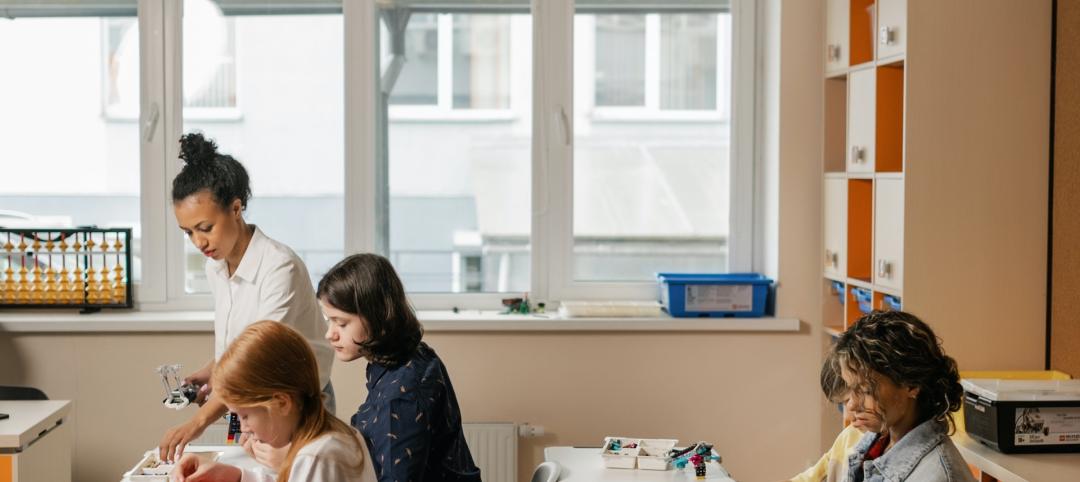HKS Architects, Inc., a national architectural firm with 28 U.S. and international offices, has formed the HKS Science & Technology practice.
Specializing in the planning and design of highly technical building types, HKS’s Science & Technology practice offers the broadest range of services available to the academic and biomedical research, biotechnology, pharmaceutical and medical device community, including laboratory programming, planning and design, strategic science planning and laboratory equipment planning.
“We know that the continuum of new science and emerging technologies is evolving with ever-increasing momentum,” said Ralph Hawkins, president and CEO of HKS, Inc. “Offering science and technology services to our clients is part of HKS’s strategy to provide the most comprehensive services to meet their constantly changing and evolving needs.”
H. Michael Smith, AIA, LEED AP, senior vice president, is HKS’s National Science & Technology Practice Leader. With more than 27 years of experience in a wide range of renovation, adaptive reuse and new construction projects, Smith has focused his entire career on the design of science and technology building types. Working for clients in the corporate, institutional, academic and government market sectors, he has directed, managed, programmed and designed many notable projects, including academic and biomedical teaching and research laboratories, biotechnology and pharmaceutical research and production facilities, cleanrooms for microelectronics and medical device manufacture, and animal research facilities, among others.
For the past decade, Smith has held principal-level, science-practice leadership positions at some of the nation’s largest architectural firms and has been responsible for the development of such notable science buildings as the Wallis Annenberg Research Center at the House Research Institute in Los Angeles, Calif.; the Arnold and Mabel Beckman Cancer Immunotherapeutics and Tumor Immunology Building at the City of Hope National Medical Center in Duarte, Calif.; the Donald P. Shiley Center for Science & Technology at the University of San Diego in San Diego, Calif.; and the Dana & David Dornsife Cognitive Neuroscience Imaging Center at the University of Southern California in Los Angeles, Calif.
Demonstrating the HKS Science & Technology practice’s commitment to achieving excellence in science and technology facilities design, the firm acquired world-renowned laboratory planning firm Earl Walls Associates, which will be rebranded as Earl Walls Consultancy, a division of HKS. With more than 2,500 laboratories to its credit, totaling over 200 million gross square feet, Earl Walls Associates grew from the 1962 collaboration among Dr. Jonas Salk, architect Louis I. Kahn and founder Earl Walls. Together they designed the Salk Institute, which established new milestones for laboratory facilities design. For the past five decades, Earl Walls Associates was integral to the development and innovation of many of the world’s modern laboratory planning concepts, including 22 awarded projects in R&D Magazine’s “Laboratory of the Year” competition.
Ken DeBoer and Ned Michalowski lead the Earl Walls Consultancy, based in San Diego, Calif. DeBoer, with 37 years of experience, is a programmer and planner with a complete understanding of the technical issues involved in highly complex laboratories and their support systems. His portfolio includes facilities for numerous government and academic institutions, ranging from sophisticated national core facilities to instructional laboratories for community colleges. More than 25 years ago, DeBoer began his laboratory planning career working with Earl Walls.
Michalowski has gained varied experience in the programming and design of laboratory facilities for the federal government, academia, private sector and institutional research. He joined Earl Walls in 1985 and has extensive experience providing strategic science planning, programming and design for numerous projects of various sizes, types and complexity. His projects have won awards including R&D Magazine's 1995 “Laboratory of the Year” for Ciba-Geigy's Life Sciences Building.
“DNA genetic coding didn’t exist 20 years ago,” said DeBoer. “Today, scientists are reinventing science as new methods and technologies become available. In turn, we must design facilities to accommodate both existing and future technologies. We speak the language of scientists, offering a distinct blend of technical knowledge and design creativity.”
Examples of innovative science and technology projects include:
- University of Texas, MD Anderson Cancer Center Clinical Research Building, Houston, Texas
- University of Arkansas for Medical Sciences, Biomedical Research Center, Little Rock, Arkansas
- University of Texas Southwestern Medical Center, Clements Advanced Medical Imaging Center, Dallas, Texas
- Brooke Army Medical Center, Institute of Surgical Research, Fort Sam Houston, Texas
- Utah State University, Widtsoe Hall Chemistry Building, Logan, Utah
- Instituto de Diagnóstico y Referencia Epidemiológicos (InDRE), Infectious Disease Laboratories, Mexico City, Mexico
- The Salk Institute for Biological Studies, La Jolla, California
- National Institutes of Health, Mark O. Hatfield Clinical Research Center, Bethesda, Maryland
- Ciba Geigy Pharmaceuticals, Life Sciences Building, Summit, New Jersey
- National Institute of Standards and Technology (NIST), Advanced Measurement Laboratory, Gaithersburg, Maryland
- Genomics Institute of the Novartis Research Foundation, La Jolla, California
- University of Alabama, Shelby Hall Interdisciplinary Science Building, Tuscaloosa, Alabama
- Pacific Northwest Laboratories, Environmental Molecular Sciences Laboratory, Richland, Washington
- University of Wisconsin, Microbial Sciences Building, Madison, Wisconsin
“Science and technology facilities should inspire creativity and innovation, foster collaboration among colleagues and peers, attract and retain the best and brightest talent, and effectively represent an institution’s desired image to the public,” said Smith. “I am passionate about our work and committed to delivering facilities for science that meet the highest expectations of our clients, while respecting their time and budget constraints.” BD+C
Related Stories
Green | Apr 21, 2023
Top 10 green building projects for 2023
The Harvard University Science and Engineering Complex in Boston and the Westwood Hills Nature Center in St. Louis are among the AIA COTE Top Ten Awards honorees for 2023.
Multifamily Housing | Apr 19, 2023
Austin’s historic Rainey Street welcomes a new neighbor: a 48-story mixed-used residential tower
Austin’s historic Rainey Street is welcoming a new neighbor. The Paseo, a 48-story mixed-used residential tower, will bring 557 apartments and two levels of retail to the popular Austin entertainment district, known for houses that have been converted into bungalow bars and restaurants.
Design Innovation Report | Apr 19, 2023
Reinforced concrete walls and fins stiffen and shade the National Bank of Kuwait skyscraper
When the National Bank of Kuwait first conceived its new headquarters more than a decade ago, it wanted to make a statement about passive design with a soaring tower that could withstand the extreme heat of Kuwait City, the country’s desert capital.
Design Innovation Report | Apr 19, 2023
HDR uses artificial intelligence tools to help design a vital health clinic in India
Architects from HDR worked pro bono with iKure, a technology-centric healthcare provider, to build a healthcare clinic in rural India.
Design Innovation Report | Apr 19, 2023
Meet The Hithe: A demountable building for transient startups
The Hithe, near London, is designed to be demountable and reusable. The 2,153-sf building provides 12 units of business incubator workspace for startups.
Metals | Apr 19, 2023
Sherwin-Williams Coil Coatings releases new color forecast for architectural metal coatings
The Coil Coatings division of Sherwin-Williams has released its latest color forecast, FUSE, for architectural metal coatings. The report aims to inspire architects, product manufacturers and original equipment manufacturers (OEMs) in the coil and extrusion market over the next 3-5 years and beyond.
Airports | Apr 18, 2023
India's mammoth new airport terminal takes ‘back to nature’ seriously
On January 15, 2023, Phase 1 of the Kempegowda International Airport’s Terminal 2, in Bengaluru, India, began domestic operations. The 2.75 million-sf building, designed by Skidmore, Owings & Merrill (SOM), is projected to process 25 million passengers annually, while providing its travelers with a healthier environment, thanks to extensive indoor-outdoor landscaping that offers serenity to what is normally a frenzied experience.
Resiliency | Apr 18, 2023
AI-simulated hurricanes could aid in designing more resilient buildings
Researchers at the National Institute of Standards and Technology (NIST) have devised a new method of digitally simulating hurricanes in an effort to create more resilient buildings. A recent study asserts that the simulations can accurately represent the trajectory and wind speeds of a collection of actual storms.
Green | Apr 18, 2023
USGBC and IWBI unveil streamlined certification pathway for LEED and WELL green building programs
The U.S. Green Building Council, Green Business Certification Inc., and the International WELL Building Institute released a streamlined process for projects pursuing certifications for the LEED green building rating system and the WELL Building Standard. The new protocol simplifies documentation for projects that are pursuing both certifications at the same time or that have already earned one certification and are looking to add the other.
K-12 Schools | Apr 18, 2023
ASHRAE offers indoor air quality guide for schools
The American Society of Heating, Refrigerating and Air-Conditioning Engineers (ASHRAE) has released a guide for educators, administrators, and school districts on indoor air quality. The guide can be used as a tool to discuss options to improve indoor air quality based on existing HVAC equipment, regional objectives, and available funding.



